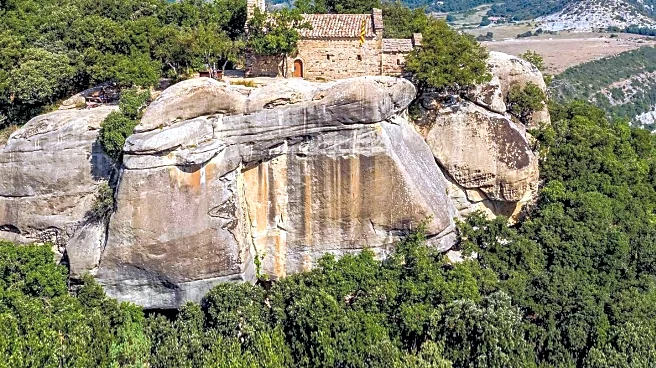What's Happening?
Terre di Sacra, a resort located along the Italian coast, offers a distinctive experience combining natural beauty with historical charm. The resort features elegant villas and cottages for rent, as well as a glamping setup with tents and lodges nestled
among dunes and cypress trees. Guests can enjoy the unspoiled coastline and explore historical sites such as a medieval tower, which has been part of the family-owned land for nearly a century. The resort provides a unique blend of luxury and nature, allowing visitors to immerse themselves in the environment while enjoying modern amenities.
Why It's Important?
Terre di Sacra's approach to tourism highlights the growing trend of eco-friendly and experiential travel. By offering accommodations that blend seamlessly with the natural landscape, the resort caters to travelers seeking authentic and sustainable experiences. This model not only preserves the environment but also supports local economies by attracting visitors interested in cultural and historical exploration. As the demand for such experiences increases, Terre di Sacra sets a precedent for other resorts to follow, potentially influencing the tourism industry's shift towards sustainability.
What's Next?
The success of Terre di Sacra may inspire other coastal resorts to adopt similar eco-friendly practices, focusing on preserving natural landscapes while providing luxury experiences. As travelers continue to prioritize sustainability, the tourism industry may see a rise in glamping and nature-focused accommodations. This shift could lead to increased investment in eco-tourism infrastructure and the development of policies that support environmental conservation. Additionally, Terre di Sacra's unique offerings may attract a diverse clientele, including families and adventure seekers, further boosting its popularity.
Beyond the Headlines
Terre di Sacra's integration of historical sites into its offerings underscores the importance of cultural preservation in tourism. By maintaining and showcasing historical landmarks, the resort contributes to the education and appreciation of local heritage. This approach not only enriches the visitor experience but also fosters a sense of responsibility towards cultural conservation. As more resorts adopt similar practices, the tourism industry may play a crucial role in safeguarding historical sites for future generations.














